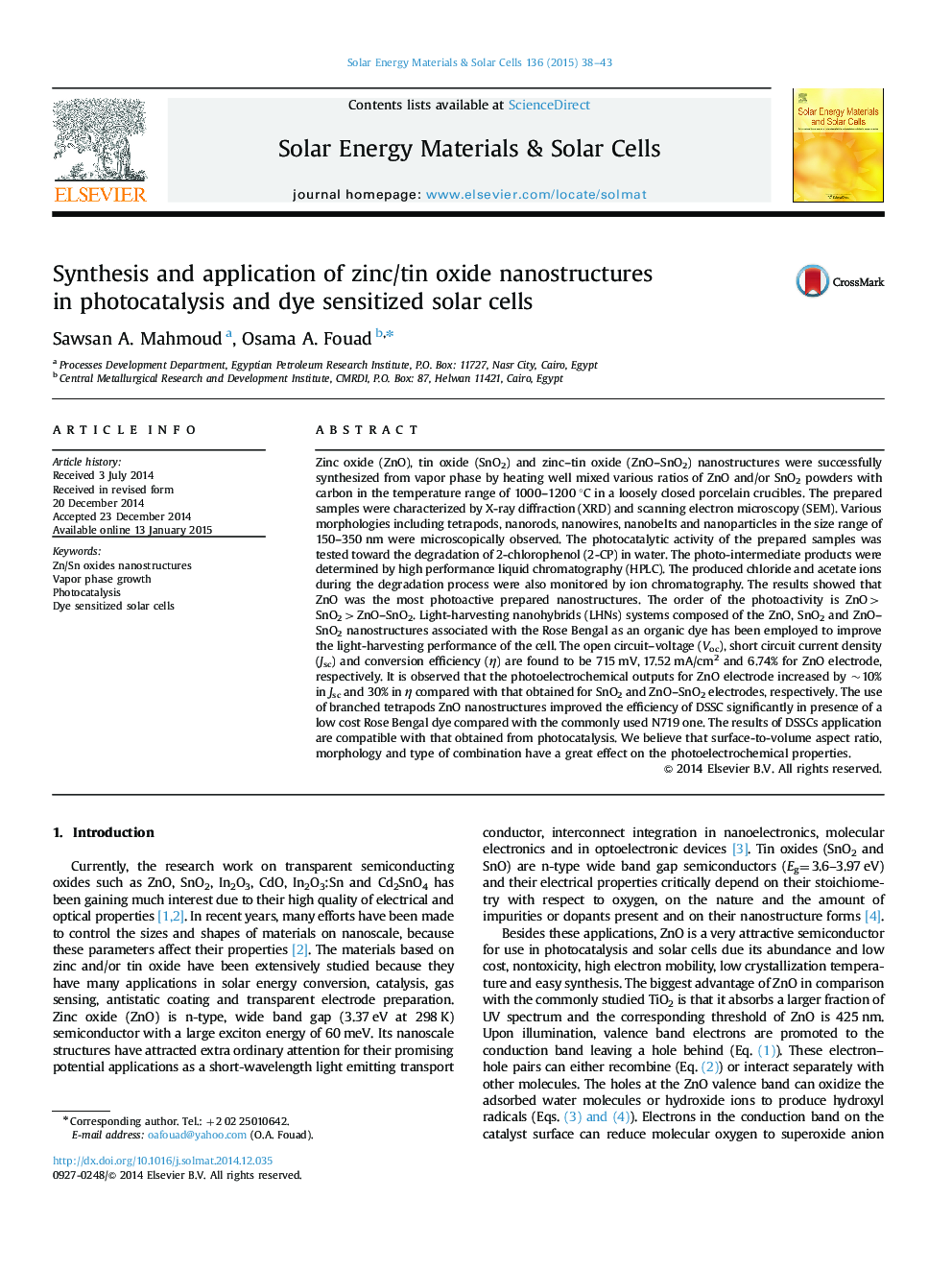| کد مقاله | کد نشریه | سال انتشار | مقاله انگلیسی | نسخه تمام متن |
|---|---|---|---|---|
| 77816 | 49306 | 2015 | 6 صفحه PDF | دانلود رایگان |
• ZnO, SnO2 and ZnO–SnO2 nanostructures were prepared via simple thermal redox route.
• Branched ZnO tetrapods has the highest photocatalytic activity toward 2-chlorophenol.
• The DSSC efficiency is improved (6.74%) using Rose Bengal dye and ZnO electrode.
• The VOC and JSC values are 715 mV and 17.52 mA/cm2 for ZnO electrode, respectively.
Zinc oxide (ZnO), tin oxide (SnO2) and zinc–tin oxide (ZnO–SnO2) nanostructures were successfully synthesized from vapor phase by heating well mixed various ratios of ZnO and/or SnO2 powders with carbon in the temperature range of 1000–1200 °C in a loosely closed porcelain crucibles. The prepared samples were characterized by X-ray diffraction (XRD) and scanning electron microscopy (SEM). Various morphologies including tetrapods, nanorods, nanowires, nanobelts and nanoparticles in the size range of 150–350 nm were microscopically observed. The photocatalytic activity of the prepared samples was tested toward the degradation of 2-chlorophenol (2-CP) in water. The photo-intermediate products were determined by high performance liquid chromatography (HPLC). The produced chloride and acetate ions during the degradation process were also monitored by ion chromatography. The results showed that ZnO was the most photoactive prepared nanostructures. The order of the photoactivity is ZnO>SnO2>ZnO–SnO2. Light-harvesting nanohybrids (LHNs) systems composed of the ZnO, SnO2 and ZnO–SnO2 nanostructures associated with the Rose Bengal as an organic dye has been employed to improve the light-harvesting performance of the cell. The open circuit–voltage (Voc), short circuit current density (Jsc) and conversion efficiency (η) are found to be 715 mV, 17.52 mA/cm2 and 6.74% for ZnO electrode, respectively. It is observed that the photoelectrochemical outputs for ZnO electrode increased by ~10% in Jsc and 30% in η compared with that obtained for SnO2 and ZnO–SnO2 electrodes, respectively. The use of branched tetrapods ZnO nanostructures improved the efficiency of DSSC significantly in presence of a low cost Rose Bengal dye compared with the commonly used N719 one. The results of DSSCs application are compatible with that obtained from photocatalysis. We believe that surface-to-volume aspect ratio, morphology and type of combination have a great effect on the photoelectrochemical properties.
Journal: Solar Energy Materials and Solar Cells - Volume 136, May 2015, Pages 38–43
